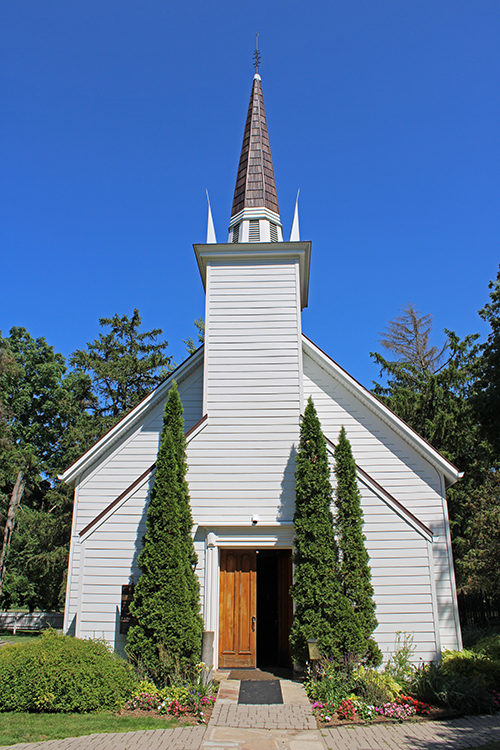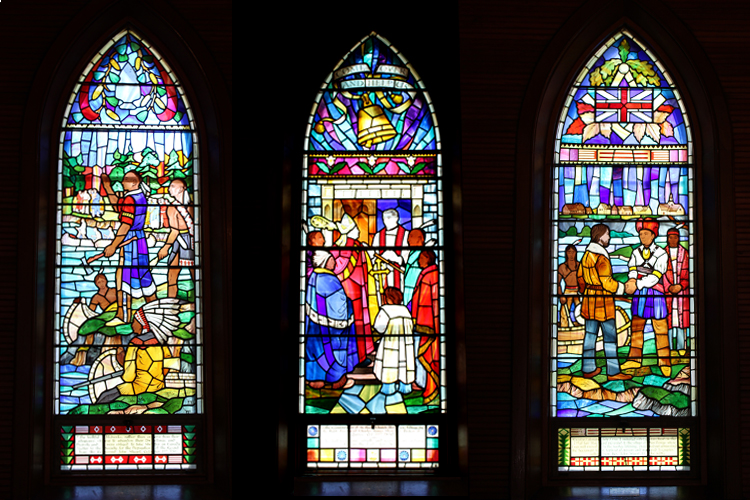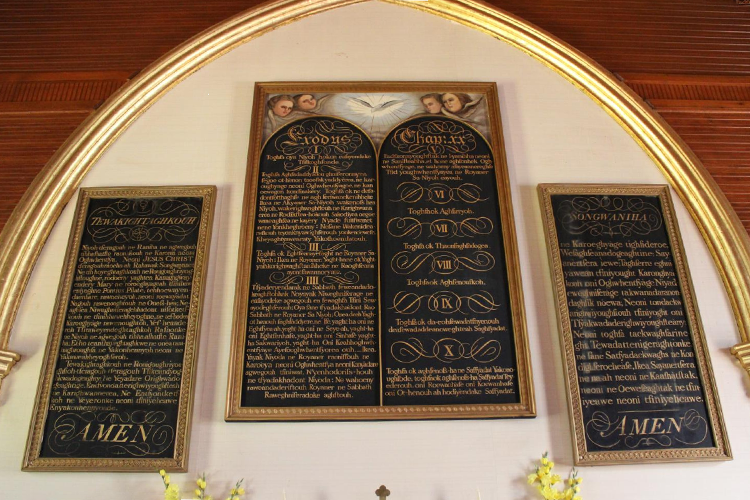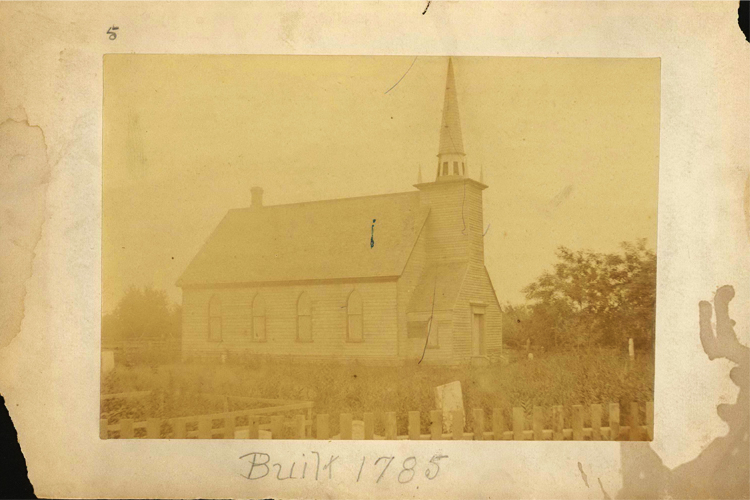If you’re an architectural historian, road trips can unveil the most rewarding treasures.
Five years ago, Joseph Clarke was driving through Brantford, Ontario and thought he would explore the area to see if there were any interesting structures.
“I always look up what should I see when I'm in a town,” says Clarke, an associate professor with the Faculty of Arts & Science’s Department of Art History. “It's something I do whenever I'm traveling.”

And he wasn’t disappointed.
He came upon a quaint church — His Majesty’s Royal Chapel of the Mohawk, which Clarke describes as “a monument to the complex dynamic of settler-Indigenous relations.” It’s the oldest existing church in Ontario and one of the oldest standing churches in Canada.
“It's a Christian church deeply connected to the history of this Indigenous community, so I was curious to learn more, especially as there's been more and more discussion of Indigenous issues and reconciliation,” says Clarke. “And the scholarly community, at least in my field, hadn't really discovered it, so that was also fascinating to me.”
That fascination led to his obtaining a grant from the federal government’s Canadian Heritage program in recognition of Queen Elizabeth II’s Platinum Jubilee. With funding in place, Clarke set out to create a virtual exhibition with a new website as part of his department’s Canada Constructed initiative.
The website was launched May 6, the day of King Charles’s coronation, “to highlight the Crown’s longstanding ties with Indigenous communities in Canada,” says Clarke.
Clarke’s team consisted of Christy Anderson, a professor with the department, and postdoctoral fellow, Jessica Mace. This trio was later joined by Katie Filek, a PhD student with the John H. Daniels Faculty of Architecture, Landscape, and Design, and Arts & Science undergraduate student Aline Nayir, a member of Victoria College.
“There’s never been an architectural history written on the Mohawk Chapel,” says Mace. “I even asked local historians and a prominent architectural historian who lives in Brantford, just to be sure … Nothing. It is a fascinating subject, so it was a fun challenge to piece together the puzzle.”
Managing to pull together information for the site through archives, historical photos and maps as well as interviews with the church’s current caretaker, the team spent countless hours piecing together the building’s history.
“I was just struck by the aura of the place,” says Clarke. “You could tell you were in a very historic site.”
Originally built in 1785 on the land of the Six Nations of the Grand River, the church is small at about 18 metres long and 14 metres wide. The building has been modified and repaired over time but has kept much of its original form.

“When it was built, there was nothing around, not even roads, so they had to float the building materials down the Grand River,” says Clarke. “It was erected at the request of the Indigenous community, which was largely Anglican at this point, because the Mohawk had embraced the Anglican missionaries who came earlier in the 18th century.”
The Haudenosaunee — a confederacy of six Indigenous Nations, one of which is the Mohawk — were displaced from their ancestral lands in present-day upper New York State in the late-18th century because of the American Revolution and resettled along the Grand River.
“The Mohawk community was one of the most loyal Indigenous Nations to the British Crown,” says Clarke. “So after the American Revolution, they weren't welcome in the United States.”
The church’s construction was part of a grant from the British government to establish a new settlement. A key spokesperson and negotiator for the Mohawk was Joseph Brant or Thayendanegea (1743–1807), whom the town is named after.
During the American Revolutionary War, Brant fought alongside the British army as a captain. Afterwards, he travelled to London to negotiate with England’s government to compensate the Haudenosaunee for their losses and to fund the construction of the new chapel.

Inside the chapel are powerful tributes to Mohawk history, such as the Ten Commandments in traditional Mohawk language on the church’s east wall.
“Similarly, the stained glass, while a much later addition, tells the history of the forced displacement from the traditional lands of the Haudenosaunee, resettlement, and the building itself,” says Mace, who took most of the photos for the website. “The windows embed Indigenous oral history traditions into the fabric of the building and are used as a narrative and teaching device to this day.”
“And outside the church is a cemetery where some of the most important leaders of the Haudenosaunee community are buried,” adds Clarke. That includes Joseph Brant.
At the same time, the church also has a strong connection to the Canadian monarchy.

“It's one of three designated royal chapels in Canada,” says Clarke, noting the late Queen Elizabeth made a visit in 1984 to celebrate the church’s 200th anniversary. “I don't think this is a designation that existed before anywhere in the world.”
When creating the website, Clarke and his team chose not to shy away from the church’s complex history — instead, they embraced it.
“This is a complicated story to tell for all kinds of reasons, with the often-oversimplified discussion of colonialism and Indigenous issues,” says Clarke. “I think many people will have complicated feelings about a building like this. What exactly does it symbolize?
“This building doesn't quite fit in anybody's narrative. It's an Anglican church with an Indigenous chaplain, serving Indigenous worshippers. It's got many layers. Putting the exhibition together, we wanted to do justice to the complexity and not oversimplify it.”
“Buildings like the Mohawk Chapel demonstrate that there’s more than meets the eye and speaks to a complex set of interwoven cultural narratives,” says Mace. “Much more needs to be done to bring to light other similarly layered structures like this and to bring balance to our shared history.”


